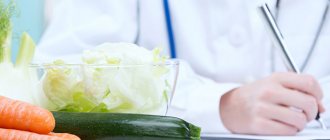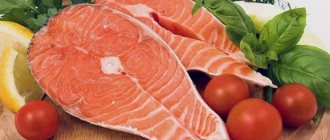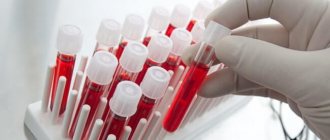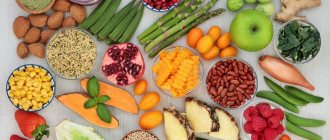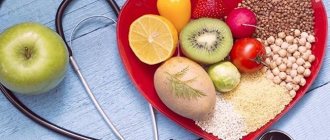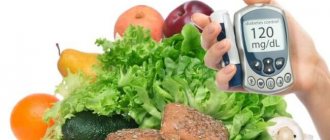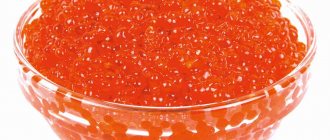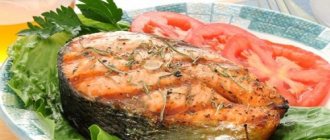The optimal blood pressure is considered to be 120/80. Indicators of 140/90 and above are elevated. People with persistent high blood pressure suffer from hypertension.
Two leading factors predisposing to hypertension have been identified:
- Excess refined carbohydrates in food;
- Constant lack of microelements.
By consuming blood pressure-lowering foods at the first sign of hypertension, you will be able to normalize your blood pressure within a few weeks without using medications that have unwanted side effects.
Nutrition strategy in the early stages of hypertension
Increase the consumption of complex carbohydrates, dietary fiber, amino acids, microelements, vitamins. At the same time, you should reduce your intake of saturated fat and cholesterol.
List of products recommended for hypertension:
- Cereals and bread: bread with added bran and oatmeal, enriched with fiber;
- Vegetables: cabbage, especially broccoli, spinach, green peas (not canned). You can eat tomatoes, potatoes, carrots, and pumpkin in small quantities.
- Fruits: apples, apricots, bananas, grapes, pineapples, peaches. Citrus fruits, including their juices and dried fruits, are also useful.
- Dairy products: milk and fermented milk products, low-fat and low-fat hard cheeses.
- Meat and fish should be consumed boiled or baked, using poultry without skin, and meat of lean varieties.
- Seeds and legumes: almonds, walnuts, sesame seeds, sunflower seeds, beans and lentils.
Important!
Consuming enough potassium (3-4 grams) with food greatly reduces the risk of disease. Potassium improves heart function and lowers blood pressure. Champions in potassium content are dried apricots, prunes, and raisins. The source of this useful mineral will be cabbage, carrots, potatoes, and pumpkin. It is no coincidence that milk and dairy products are included in the diet for hypertension. The microelements in which they are rich are better absorbed by our body, since in this case they are associated with protein.
Herbal tea, compote of dried fruits and rose hips will make up for this potassium deficiency.
Lack of magnesium in the body is one of the common causes of hypertension.
The most important mineral for maintaining cardiovascular activity, including in the treatment of hypertension, is magnesium. During hypertensive crises, the administration of magnesia ensures guaranteed relief of the attack by relieving spasms and relaxing the nervous system.
If you meet the daily requirement of 500 grams of magnesium, it does an excellent job of regulating blood pressure and normalizing heart rhythm. Slows down the clogging of blood vessels with atherosclerotic plaques, calcium deposits and prevents the formation of blood clots. Magnesium in the diet is necessary for the absorption of potassium, calcium, and phosphorus metabolism.
Foods that lower blood pressure for magnesium deficiency:
- Wheat bran is a record holder for magnesium content;
- Sprouted wheat grains will help quickly restore microelement reserves.
The role of diet in the fight against hypertension
When considering the effectiveness of dietary nutrition, it is necessary to take into account the starting data in each individual case. The transition to a healthy diet with an emphasis on lowering blood pressure is an important preventive measure for the risk group, which includes every second inhabitant of the planet.
The likelihood of developing hypertension increases with a sedentary lifestyle, excessive physical activity and stress, alcohol abuse, smoking, hereditary predisposition and age-related changes.
- Diet for knee arthritis. What foods are good and what are bad for arthrosis?
The beneficial effects of the diet must be supported by giving up bad habits, therapeutic exercises, breathing exercises, and walking.
High blood pressure can be of somatic origin and manifest itself as a symptom of diseases of the endocrine, digestive and cardiovascular systems.
When switching to restrictive diets and standard menus for hypertensive patients, it is necessary to take into account the specifics of concomitant diseases.
Dietary nutrition is not a basis for removing the diagnosis.
Reducing dosages, switching to gentle drugs or abandoning them is carried out by the attending physician on the basis of long-term observation.
How to cook
To germinate, the grains are poured with warm water without excess, covered and placed in a warm place. When the grains sprout, they should be washed and placed on a towel to dry. Grind in a coffee grinder or chew one hour before meals.
- Sunflower seeds contain 6 times more magnesium than rye bread. Flax seeds, sesame seeds, pumpkin seeds, pine nuts and walnuts are high in content. Salted seeds and nuts will do harm instead of benefit.
- Cocoa and natural dark chocolate are rich in microelements. Including small amounts of these foods in your diet can help you cope with stress effectively.
- Sea kale combines magnesium, potassium, phosphorus, and sodium salts with low calorie content, which makes it an indispensable product in the treatment of overweight hypertensive patients.
- Apricots contain magnesium and will also help improve memory and increase performance.
A tasty and plentiful diet made up of healthy foods does not guarantee that the content of microelements and vitamins in the body will always correspond to the norm.
One of the reasons is eating canned foods and using heat and mechanical processing in the cooking process. Canned green peas contain half as much magnesium as the original product.
The actual content of microelements in store-bought vegetables and fruits may differ significantly from the values given in reference books, due to non-compliance with harvesting and storage conditions.
Vitamins are destroyed during long-term storage of frozen meat and fish. To get the required amount of nutrients from food, there are two ways: increase the amount consumed or use synthesized preparations containing vitamins and minerals.
Another reason is the rapid consumption of magnesium during stressful situations, when in ten minutes of severe nervous disorder you can lose half of its daily supply. Magnesium deficiency provokes a sedentary lifestyle and the use of diuretics. Abuse of coffee and foods containing excess phosphorus, zinc, and calcium also causes a lack of magnesium.
The recommended diet will not work if hypertension is caused by impaired body functions associated with other serious diseases. Secondary hypertension can be caused by the following reasons:
- Metabolic syndrome;
- Diabetes;
- Thyroid dysfunction;
- Kidney diseases;
- Rare diseases (adrenal tumor), mercury poisoning
Which foods reduce blood pressure in secondary hypertension depends on the type of disease and the severity of the disease.
Traditionally, patients with hypertension are recommended to follow a low-calorie diet with limited animal fats. It has virtually no effect on secondary hypertension caused by metabolic syndrome. For such patients, low-fat foods in combination with large amounts of carbohydrates do not bring benefit, as does an abundance of fructose.
You can get the necessary vitamins and minerals from green vegetables that are low in carbohydrates, replacing fruits with them. A low-carbohydrate diet will help overweight patients normalize blood pressure fairly quickly. Not recommended for thin people.
Foods that lower blood pressure in metabolic syndrome and diabetes, allowed on a low-carbohydrate diet:
- Meat, poultry, eggs, fish, seafood;
- Green vegetables - broccoli, celery;
- Dairy products include cheeses, butter, cream;
- Hazelnuts are suitable for nuts, but peanuts are not suitable. Moderate consumption of almonds and walnuts will not harm. Eating about 150 grams of unsalted sunflower seeds per day will be beneficial.
The recommendation to use a low-carbohydrate diet for diabetes is a new revolutionary direction in medical practice.
If you do not want to take risks and participate in such a medical experiment, as an alternative, you can use products that have long proven positive in the treatment of various diseases complicated by hypertension.
Sample menu
This menu can be prescribed by a doctor and adjusted at his discretion for a more effective fight against hypertension.
Monday
Breakfast: 200 g of steamed oatmeal, 100 g of assorted dried fruits (figs, dates, dried apricots, prunes).
Lunch: 150 g of fruit mousse (banana, apple, persimmon).
Lunch: 150 g whole grain pasta, 80 g goulash, 70 g broccoli salad.
Afternoon snack: 200 g of berry-curd dessert (fresh).
Dinner: 200 g fish meatballs, 30 ml sour cream,
2 hours before bedtime: 250 ml of 1% kefir.
Tuesday
Breakfast: 200 g of rice and fruit porridge (raisins, banana, dates), 70 g of rye bread (dried), 20 ml of honey.
Lunch: 150 g of berry-nut mixture (grapes, cranberries, blackberries, almonds, hazelnuts).
Lunch: 200 ml fish soup, 150 g beetroot-prune salad, 10 g garlic.
Afternoon snack: 150 g potatoes (baked or boiled), 100 g tomatoes, 20 ml camelina oil.
Dinner: 200 g buckwheat, 100 g sauerkraut, 70 g boiled turkey.
2 hours before bedtime: 250 ml of green cocktail (kefir, herbs, honey, banana).
Wednesday
Breakfast: 200 ml of chicory drink, 100 g of cranberry jam (ground with sugar), 70 g of whole grain bread (dried), 50 g of walnuts.
Lunch: 200 g curd soufflé, 50 g raisins.
Lunch: 250 g lentil soup, 100 g chopped vegetables, 15 ml flax seed oil.
Afternoon snack: 150 ml yogurt, 100 g fresh fruit (strawberries, banana, apples).
Dinner: 200 g chicken breast with vegetables (stewed), 100 g beet-garlic salad, 40 g celery leaves.
2 hours before bedtime: 200 ml of homemade serum.
Thursday
Breakfast: 150 g apple pudding with raisins, 150 ml rosehip broth, 30 ml flower honey.
Lunch: 150 g berry compote, 100 g cottage cheese casserole.
Lunch: 200 g borscht with beans, 100 g rice meatballs, 50 g vegetable mixture (tomato, cucumber, celery).
Afternoon snack: 150 g seaweed salad, 20 ml cedar oil
Dinner: 150 g mashed potatoes, 100 g zucchini-eggplant caviar, 70 g chicken cutlets (steamed).
2 hours before bedtime: 150 ml of yogurt.
Friday
Breakfast: 150 g egg omelet, 100 g sauerkraut, 70 g bacon.
Lunch: 200 ml hibiscus tea, 100 g oatmeal cookies.
Lunch: 200 g pilaf, 100 g beetroot-garlic salad, 20 ml flax seed oil.
Afternoon snack: 200 g of fruit and berry jelly.
Dinner: 250 g vegetable stew, 50 g boiled veal.
2 hours before bedtime: 250 ml of yogurt.
Saturday
Breakfast: 200 g of oatmeal, 100 g of fermented baked milk, 70 g of dried fruits (unabi, dates, raisins, prunes), 50 g of biscuits.
Lunch: 200 ml cinnamon milkshake.
Lunch: 200 g squash-eggplant caviar, 100 g bean puree, 50 g leafy greens.
Afternoon snack: 200 ml yogurt, 50 g walnuts.
Dinner: 250 g of green buckwheat, 150 g of boiled vegetables (eggplant, beets, zucchini, carrots), 70 g of chicken steak (baked).
2 hours before bedtime: 200 ml of serum.
Sunday
Breakfast: 200 ml cocoa, 70 g bran bread, 50 g cheese, 30 g butter.
Lunch: 200 g seasonal berries, 50 g almonds.
Lunch: 150 g jacket potatoes, 100 g cauliflower in batter, 100 g baked turkey, 15 ml camelina oil.
Afternoon snack: 200 ml mint tea, 150 g oatmeal-curd casserole.
Dinner: 150 g fish steak (stewed), 100 g vegetable mixture (tomatoes, celery, peppers, cucumbers, garlic).
2 hours before bedtime: 200 ml of kefir.
Products that normalize blood pressure, which have come down to us from time immemorial
When compiling a diet, it is useful to include products that have stood the test of time, the healing properties of which have been known since ancient times.
Celery was highly valued in Ancient Greece and was rightly considered a cure for many diseases. This plant came to us relatively recently, in the 18th century. Leaf celery is especially popular. The root and petiole types are no less useful.
- Has a vasodilating effect, normalizes blood pressure;
- Helps relieve nervous tension, as it contains substances that reduce the level of stress hormones in the blood;
- Contains vitamins C, A, B and E, amino acids.
Celery can be added to salads, soups, omelets and baked goods.
Garlic was widely used in ancient Chinese medicine. We are well aware of its antibacterial properties. The medicinal properties of garlic, among others, include lowering blood pressure, protecting against cardiovascular diseases, and inhibiting the development of atherosclerosis.
When a clove of garlic is destroyed, allicin is formed, which is able to cleanse blood vessels of atherosclerotic plaques. The secret to a small but lasting blood pressure lowering effect is to consume two cloves of garlic with meals every day.
Spices and seasonings
Ginger has blood pressure-normalizing properties. Although formally it cannot be attributed to this group. This is a full-fledged independent product.
- The substances based on it thin the blood, acting as a natural antiplatelet agent.
- In addition, they help relax the vascular muscles, preventing further spasm and an increase in tonometer readings.
Turmeric is called a good help in prevention and even therapy. The substance of the same name in its composition helps to quickly reduce blood pressure, but gently, and therefore does not create health risks.
Hot cayenne pepper. He's chili. The product is used to rapidly reduce blood pressure. This is a reflex response to the use of capsaicin, which the product is so rich in.
But this can be dangerous, since a sharp jump in blood pressure does not affect the condition of the blood vessels (their elasticity). Pepper is allowed for hypertensive patients, but it should be eaten with caution.
Foods that lower blood pressure in old age
Excessive nutrition can be harmful to an aging body, even if you eat a healthy range of foods. For elderly people, 2100-2300 kcal per day is enough, and old people should not exceed the level of 1900-2000 kcal.
The energy value of food should be reduced by reducing the consumption of sugar, confectionery products, and fatty meats. The indicator of body weight stability is used as a control.
Excess protein can cause additional stress on the liver and kidneys. Moderate restriction of meat consumption can be balanced by introducing dairy and fish products into the menu. Low-fat fish varieties, such as cod or perch, are especially useful.
Fatty sea fish is a source of beneficial Omega-3 acids for our body. It is food enriched with natural substances containing Omega-3 that is the key to the health and longevity of the northern peoples.
Fish oil is used in the treatment of cardiovascular diseases. The blood thins, the formation of blood clots is inhibited, and constricted blood vessels relax.
Omega-3 acids are found in salmon, mackerel, herring, olive oil, and walnuts. Eating these products in old age will prevent many diseases, including hypertension.
In the elderly body, both oversaturation and deficiency of mineral substances occur. Calcium salts, on the one hand, are deposited on the walls of blood vessels, impairing their patency. On the other hand, a lack of calcium in bone tissue causes their fragility.
The main thing in the nutrition of elderly and old people is to maintain a balanced meal intake and eliminate possible overeating.
In conclusion, here are some tips on excluding foods that increase blood pressure in hypertension from your diet.
Fruit juices
Pineapple juice, which contains a lot of potassium, is considered very beneficial for blood vessels and blood circulation. But it is better to be careful with it, since pineapples are contraindicated for people with chronic diseases of the gastrointestinal tract. And even if there are no such diseases, gastroendocrinologists recommend diluting it and drinking it in small portions throughout the day, but not more than 1 glass.
Pomegranate juice is used to fight arterial plaques, watermelon juice fights dehydration and improves kidney function, apple juice tones veins and blood vessels, grape juice improves metabolic processes in the body.
Important! Note that drinks have a positive effect over time. That is, to achieve visible improvements, you need to drink tea with hawthorn for at least a couple of months.
There are contraindications. Be sure to consult your doctor.
Foods that increase blood pressure
All diets for hypertension are based on limiting salt intake to five grams per day.
- Pickles, marinades, herring - it is better to avoid these products completely;
- It is recommended to partially replace animal fats with vegetable fats;
- Cream, sour cream, butter - have a coagulating effect, that is, the ability to constrict blood vessels and increase blood viscosity. Their use should be limited;
- Sugar, honey, jam - consume limitedly, it is advisable to exclude confectionery products from the daily diet;
- Spicy seasonings, snacks, smoked meats - irritate the kidneys and stimulate the central nervous system and heart;
- In large quantities, cocoa, coffee, chocolate, tea, alcohol, as well as strong meat broths and sauces, stimulate the central nervous system and the heart.
Important! Water intake is not limited.
Optimal diet
Neutral products that do not lower or increase blood pressure, but have a beneficial effect on the general condition of blood vessels and must be included in the hypertensive menu include:
- vegetables that reduce not only blood pressure, but also weight (red bell peppers, all types of cabbage, celery, radishes, beets, carrots, zucchini, eggplants, etc.), fresh, steamed or stewed without oil;
- berries and fruits (black and red currants, raspberries, strawberries, cherries, apples, pears, apricots, citrus fruits, grapes, rose hips, chokeberries);
- lean meats (veal, beef) and skinless poultry (chicken, turkey);
- white fish;
- vegetable oils (olive, flaxseed, sunflower);
- cereals;
- pasta and whole grain bread;
- mushrooms;
- greenery;
- spices (cinnamon, oregano, cardamom).
These products normalize the condition of the heart and blood vessels, promote weight loss, and have a beneficial effect on a person’s appearance due to the high content of vitamins, minerals, and valuable microelements.
For hypertension, it is better to replace white sugar with honey, which makes food not just sweet, but as healthy as possible
